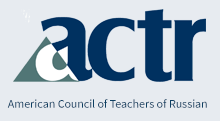Russian Language Journal
Keywords
Chekhov, theatre, students, history, writing
Abstract
Sharon Carnicke’s Checking out Chekhov: A Guide to the Plays for Actors, Directors, and Readers provides a succinct foundation for understanding how to read Chekhov’s mature plays for theatre practitioners and students who so often encounter his work. As one of the most often produced and adapted playwrights in professional and academic theatres, Chekhov must be produced by theatre professionals that have a handle on how to think, talk, and, ultimately, produce Chekhov. While many books aimed at this audience offer interpretive readings, analytical strategies, and historical contexts for engaging with Chekhov’s unique dramatic worlds, none approach Chekhov using Carnicke’s astute strategy: focusing on the popular literary and dramaturgical influences on Chekhov. As she promises, Carnicke guides the novice through key background reading, emphasizing popular dramatic forms that shaped Chekhov’s dramaturgy. She manages complex dramaturgical ideas and historical information with deft, fluid, animated writing, including only what is necessary to explain how Chekhov wrote plays “that are neither fully comic nor tragic, with characters who are neither heroes nor villains and who speak nonsense and philosophy with equal fluency” (221).
Recommended Citation
Robinson, V. J. (2015). Review: Checking Out Chekhov: A Guide to the Plays for Actors, Directors, and Readers. Russian Language Journal, 65(1). https://doi.org/10.70163/0036-0252.1114

